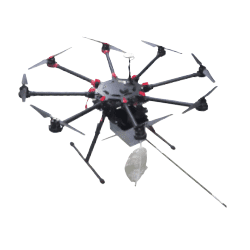Search WikiOdour by Keyword
Odour Dispersion Modelling
Overview
Odour dispersion modelling is used to calculate how odour disperses in the atmosphere. It can also determine what the odour concentration may be at the ground level. There are several models available with advantages and disadvantages. Generally, there are two models used in odour dispersion modelling: Gauss and Lagrange.
Dispersion modelling is a computer simulation of predicting pollutant/odour concentrations by using facts as an input. Most models require the inputs of:
- emission rates
- source characteristics
- land topography
- meteorological data
- background concentrations of pollutant
Gaussian Plume Models
The most common model used is the steady-state Gaussian plume models. Above all, these are the easiest to use and describe a simplistic dispersion process. Advanced models take into account diffusion and dispersion using fundamental properties of the atmosphere. These models are better suited for difficult situations such as long-distance transport. Dispersion models provide the ambient odour concentration for each time step. Data is collected every half-hour to 1 hour of monitoring the mean values of the ambient concentration. Models are secondary to community feedback, i.e. if the community reports odour it will outweigh the model.
Dispersion Modelling
Dispersion modelling requires odour emission rates for point sources (OU/s) and area sources (OU/s/m2). For one or two sources the maximum emission rates may be used in the model. For multiple sources, the maximum emission rate may result in being conservative and unrealistic. To prevent these sources may be combined together if of a similar nature or if one source masks the other sources. Multiple sources can be expressed as an average emission if process emissions do not peak at the same time. It is key to understand the emission characteristics and peak times to create an effective model. Modelling of multiple sources can help predict which sources may be contributing to more odour relative to other sources by ‘switching off/on’ sources in the model.
Background odours may need to be accounted for in the model depending on their nature. For instance, if a background odour is weak or significantly different then the model can omit the background odour.
Multiple sources can be modelled to represent a sum of pollutants but may not be applicable in the case of odours. For example, if source A creates a concentration of XA and source B creates a source of XB then the sum of pollutants (such as particles or hydrogen sulphide) at the receptor is XA+XB. This assumption is not valid for odours since various chemicals can create different odours when combined due to masking or synergistic effects.
Dispersion Modelling Limitations
Due to the complex nature of odours, dispersion models may have the following limitations:
- Combination of compounds create different odours different than there individual odours at the concentration
- have varying sensitivities and judgment in hedonic tone (odour concentration is not linear with odour intensity)
- odours may be short-lived where models are used for long term exposures (variable odour emission rates)
- lack of local meteorological data
Two models widely used for regulatory purposes in the US are AERMOD (Gaussian plume model, steady-state) and CALPUFF (puff model, non-steady-state)


